
~ writing, programming, art ~
<< Previous next >>
28 August 2015
Alchemite Awesomeness
Behold, the first block-mechanic based art for Alchemite:
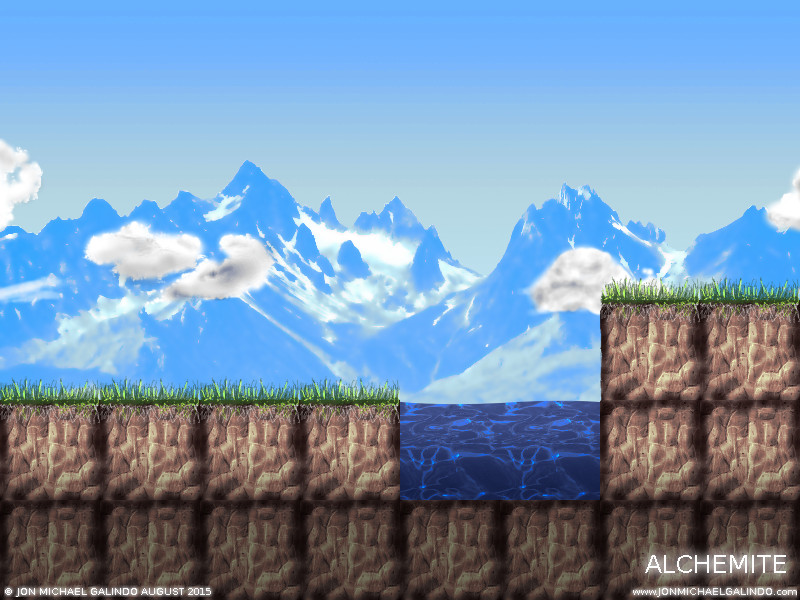
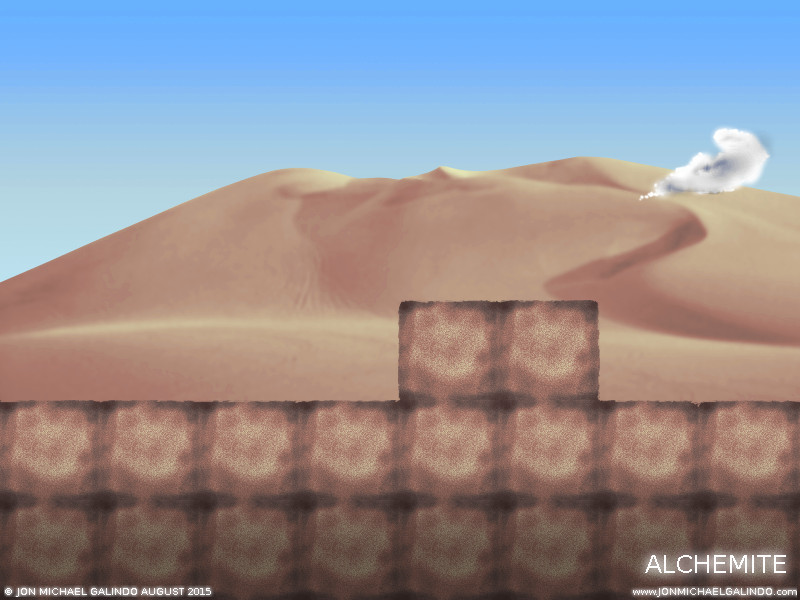
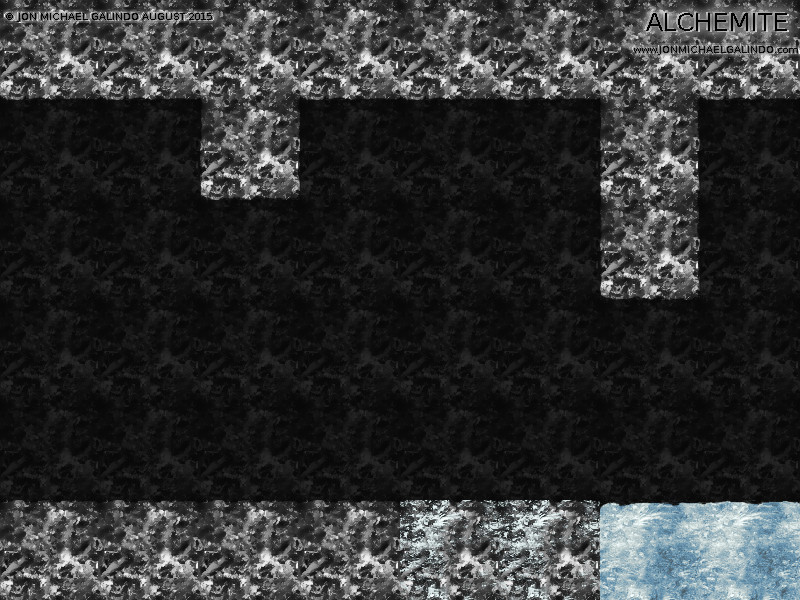

Unfortunately, the block-based look is unavoidable. Much like Minecraft, this game depends on a vast, mutable world. The player can freely transform and build upon the landscape. (Building mechanics differ significantly from Minecraft, but the principle remains the same.) Since computers have limitations, the world's resolution is limited to these large blocks.
However, the item mechanics more than make up for it. Every item is hand-editable using any number of layers of base materials. Structural integrity, durability, mass, damage, and useage effect are all calculated dynamically from the player's art:
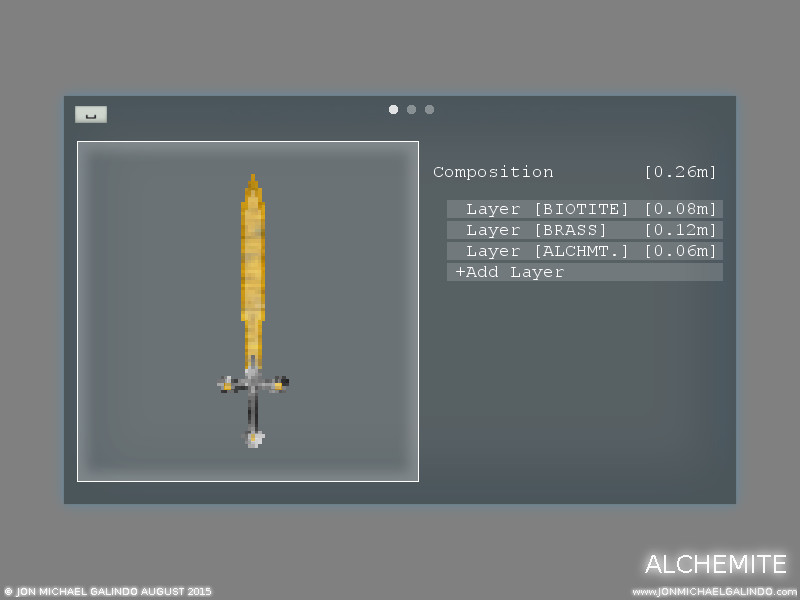
The real beauty of gameplay is in the blade mechanics. Any custom-shaped item can be used as a weapon or tool in-game, simply by configuring the blade mechanics. The player can design completely customized swords, spears, shields, shovels, axes, picks, and so much more: there are no "usage classes", the blade configurations interact directly and simply with the world physics. Notice the third layer of this item (see image above) is not a material at all, but an alchemite. This means that any item can cast spells. Using the infinite, world-altering alchemite mechanics, the player can create completely customized guns, missiles, rideable vehicles, and absolutely anything else imaginable. The player has the same limitless capacity as the programmer:
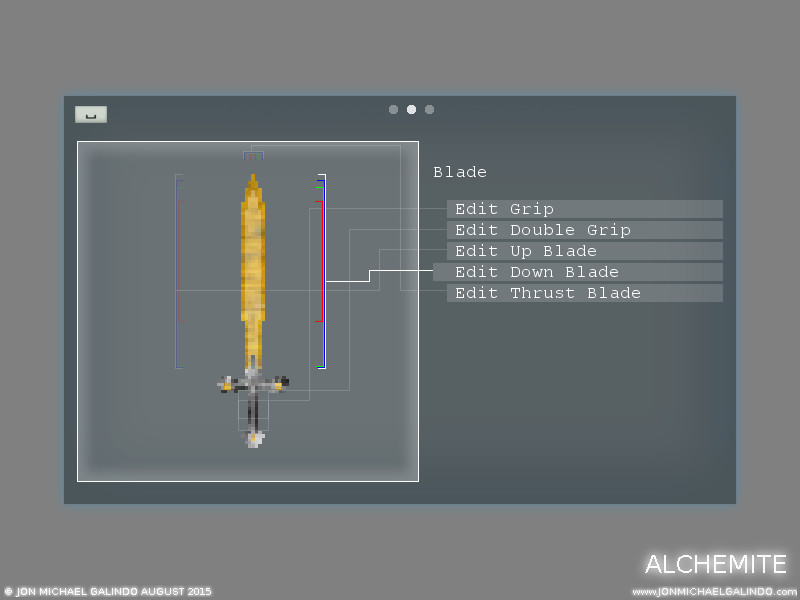
As seen in these keybindings, the item is useable as both a bladed tool and a programmable alchemite:
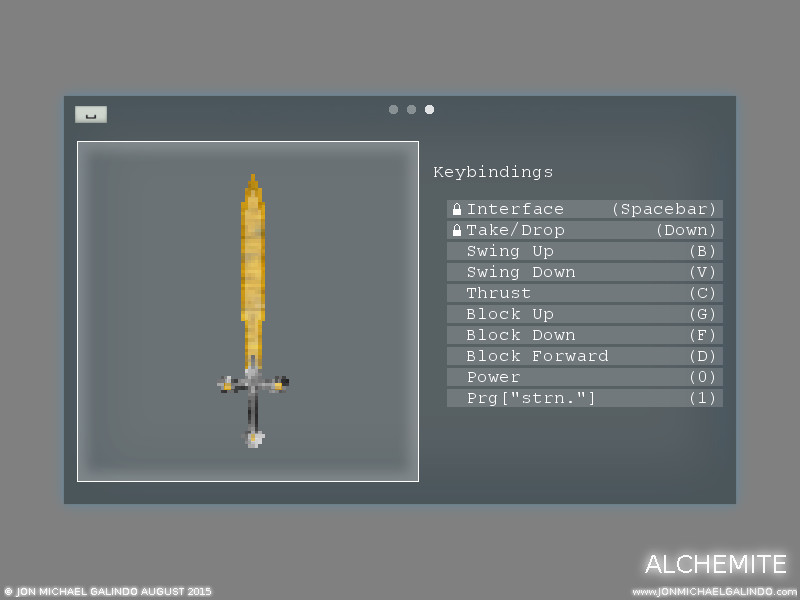
Items thus created appear in the game exactly as per the player's intent. Behold, the sword in the stone: ;-)
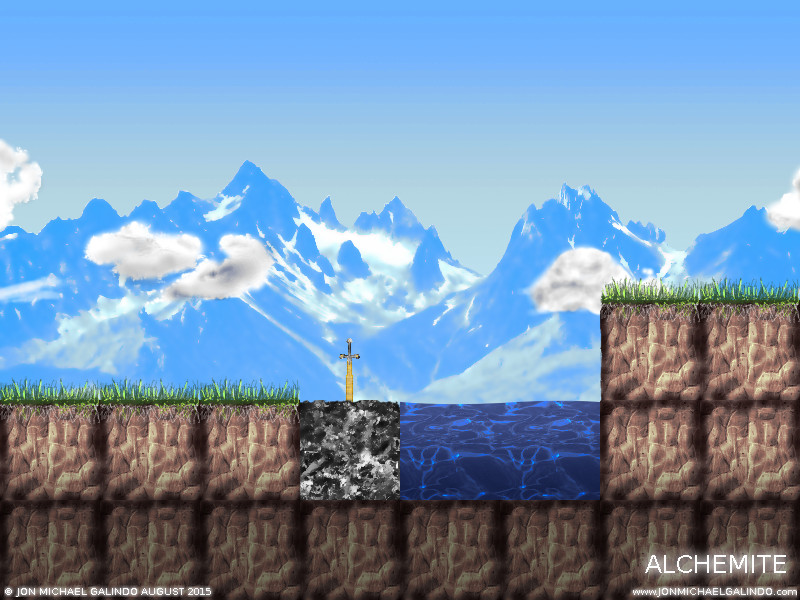
Admittedly, this much mutability sounds difficult to code. It is not, however, as complicated as you might expect. So far, I remain hopeful and happy, and I have plans for more to come.